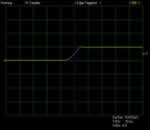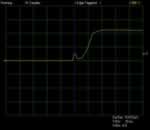Loads are applied to the power supply using a SunMoon SM-8800 automated load tester. I will do a total of 11 tests. Test 0 is +5VSB load only, with 50% of the +5VSB rail's capability applied. Test 1 through 8 are then 10%, 20%, 30%, 40%, 50%, 60%, 80% and 100% loads. Test 9 is a crossload that puts everything on the +12V rail. Finally, test 10 maxes out the +3.3V and +5V rails while only a 2A load is on the +12V rail.
Those of you who frequent my reviews are used to seeing both cold and hot tests. I've decided that, unless the power supply has the potential to blow up under a hot load (certain brands you expect to only operate at full load at room temperature), I am only going to do hot load tests from now on.
|
PC Power & Cooling Silencer Mk III 600W load tests |
||||||||
|
Test # |
+3.3V |
+5V |
+12V |
+5VSB |
DC Watts/ |
Eff. |
Power |
Intake/ |
|
Simulated system load tests |
||||||||
|
Test |
0A |
0A |
0A |
1.3A |
3W/ |
75% |
.41 |
24°C/ |
|
5.04V |
||||||||
1 |
1.6A |
1.6A |
3.4A |
1.3A |
72.6W |
27°C |
||
|
3.39V |
5.01V |
12.15V |
5.04V |
|||||
|
Test |
3.1A |
3.1A |
7.3A |
1.3A |
120.8W/ |
83.3% |
.99 |
28°C/ |
|
3.38V |
4.99V |
12.16V |
5.02V |
|||||
|
Test |
4.7A |
4.7A |
11.2A |
1.3A |
181.3W/ |
84.5% |
.99 |
29°C/ |
|
3.36V |
4.96V |
12.16V |
5.01V |
|||||
|
Test |
6.3A |
6.3A |
15.1A |
1.3A |
241.9W/ |
85% |
.99 |
31°C/ |
|
3.35V |
4.94V |
12.17V |
5.00V |
|||||
|
Test |
7.8A |
7.8A |
19.1A |
1.3A |
302.6W/ |
84.5% |
.99 |
32°C/ |
|
3.34V |
4.91V |
12.18V |
4.99V |
|||||
|
Test |
9.4A |
9.4A |
23.0A |
1.3A |
362.9W/ |
83.5% |
.99 |
33°C/ |
|
3.33V |
4.89V |
12.18V |
4.98V |
|||||
|
Test |
12.5A |
12.5A |
30.8A |
1.3A |
482.6W/ |
82% |
.99 |
35°C/ |
|
3.31V |
4.84V |
12.20V |
4.97V |
|||||
|
Test |
14.1A |
14.1A |
34.7A |
1.3A |
542.5W/ |
81.6% |
.99 |
37°C/ |
|
3.29V |
4.81V |
12.21V |
4.96V |
|||||
|
Test |
0A |
0A |
46A |
0A |
515W/ |
82% |
.98 |
37°C/ |
|
3.34V |
5.33V |
11.23V |
5.01V |
|||||
|
Test |
14.1A |
14.1A |
2A |
0A |
138.9W/ |
78% |
.99 |
33°C/ |
|
3.34V |
4.74V |
12.58V |
5.03V |
|||||
Looking at test 0, we don't see good efficiency nor do we see good power factor, but this is not at all unusual for such a low load.
Going from test 1 to 8, we see a 3% drop on the +3.3V rail, a 4% drop on the +5V and a 1.6% drop on the +5VSB rail. These are slightly below average numbers. The +12V rail, on the other hand, actually showed an increase in voltage, which leads us to believe that a +12V sense is in use in this power supply.
Looking at our crossloads, we see some very interesting behavior. +12V dropped way out of spec when it was the only rail loaded. And it almost went out of spec in the other direction when it only had 2A loaded on it, but had a full load on the non-primary rails. That really makes me want to see how this unit is set up internally. It's acting like a group regulated unit.
If we look at the efficiency numbers at 20%, 50% and 100%, we see 83.3%, 84.5% and 81.6% efficiency. For 80 Plus Bronze, a power supply needs to be 82%, 85% and 82% efficient at 20%, 50% and 100% loads, respectively. We're pretty close, but according to the 80 Plus report, we should be getting 86.46%, 86.83% and 83.42% efficiency, so we're going to emulate the tests performed by Ecos on our equipment and see if we can get any better efficiency numbers.
|
PC Power & Cooling Silencer Mk III 600W 80 Plus load tests |
|||||||
|
Test # |
+3.3V |
+5V |
+12V |
+5VSB |
DC Watts/ |
Eff. |
|
|
Simulated system load tests |
|||||||
|
2.7A |
2.7A |
7.9A |
0.4A |
143.7W |
|||
|
3.37V |
4.99V |
|
12.14V |
5.04V |
|||
|
50% |
6.6A |
6.7A |
19.7A |
1.1A |
302.9W/ |
85.1% |
|
|
3.34V |
4.92V |
12.15V |
5.00V |
||||
|
100% |
13.2A |
13.3A |
39.3A |
2.1A |
602W/ |
81.7% |
|
|
3.29V |
4.82V |
-12.11V |
12.16V |
4.93V |
|||
Well, that's pretty darn close! I didn't get numbers as good as Ecos, but I'm pretty darn close to 80 Plus Bronze efficiency. I only miss at 100% load and I only miss by .3%.
I also have to note the fan noise. Mind you, a 120mm fan is better than a 80mm fan, but at full load this fan got loud enough to hear over the load tester's exhaust fan. That's quite a feat! I actually took the power supply off the hot box so the load tester could exhaust better because I was afraid the noise was coming from it and not the power supply!
No let's have a look at the oscilloscope screen shots:
|
|
||||
|
|
|
|
|
|
|
|

|
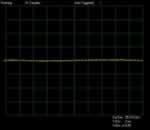
|
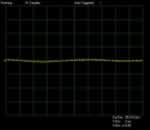
|
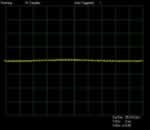
|
|
|

|
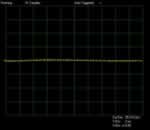
|
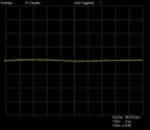
|
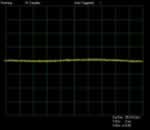
|
|
|
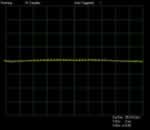
|
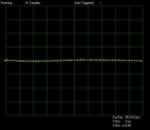
|

|

|
|
|

|
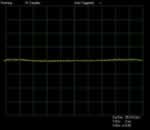
|
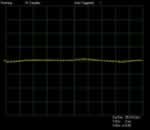
|

|
|
|
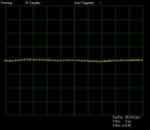
|

|

|
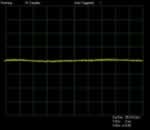
|
|
|
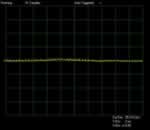
|
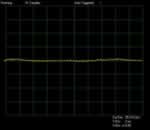
|

|
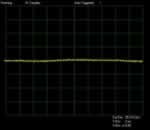
|
|
|

|

|
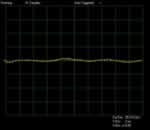
|
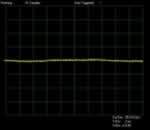
|
|
|

|
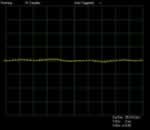
|

|

|
|
(CL 1) |
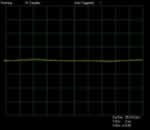
|
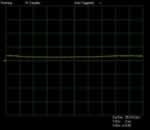
|
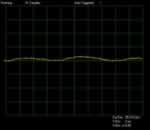
|
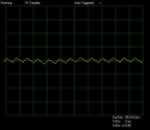
|
(CL2) |
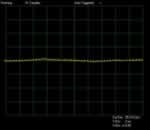
|
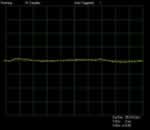
|
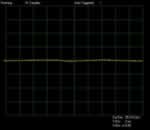
|

|
Everything is well within specification. The waveforms get a little funky while the power supply is crossloaded, but like I said, it's all still well within spec.
Now we're going to look for transient overshoots. This also gives us an opportunity to check out rise-time. An overshoot is a spike in voltage as the power supply powers up that may exceed specification. Rise-time is how long it takes for the power supply to go from 0V to whatever voltage the rail is supposed to deliver.
The first test has a look at the +5VB rail, going from full off to standby. The second test measures the +12V going from standby to a full load on the +12V. The third test measures the +12V going from full off to full load.
| Overshoot
Transient Testing for OCZ
ZT 750W PC Power & Cooling Silencer Mk III 600W |
|||||||
|
Off to VSB On |
VSB to Full, 12V |
Off to Full, 12V |
|||||
Our first test looks really good. We go from 0 to +5V in 10ms with no overshoot. But our next two screen shots look like we're designing a roller coaster! Believe it or not, this is still within specification.
What we're seeing is the +12V going from 0V to +2.5V, dipping back down to about +1V, then shooting up to +10V, then slowly increasing to +12V. It sounds and looks scary, but the fact of the matter is, this all happens within 20ms and the voltage within 10% at 20ms, so we're good to go. If the rise to +12V would have taken another couple milliseconds longer to get to +12V ± 10%, we would have something to complain about.
Now it's time to pop the hood and see what it looks like on the inside...
